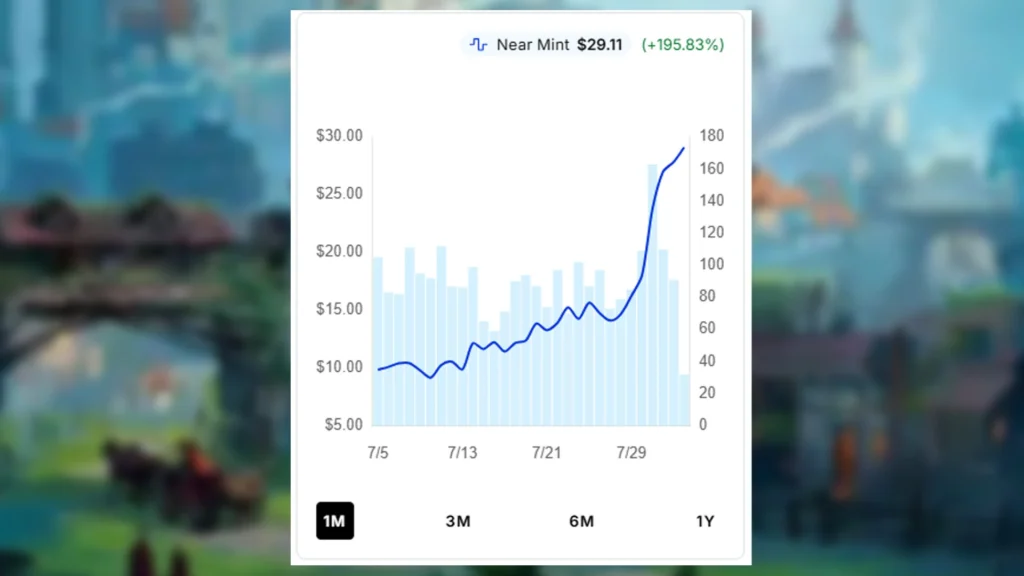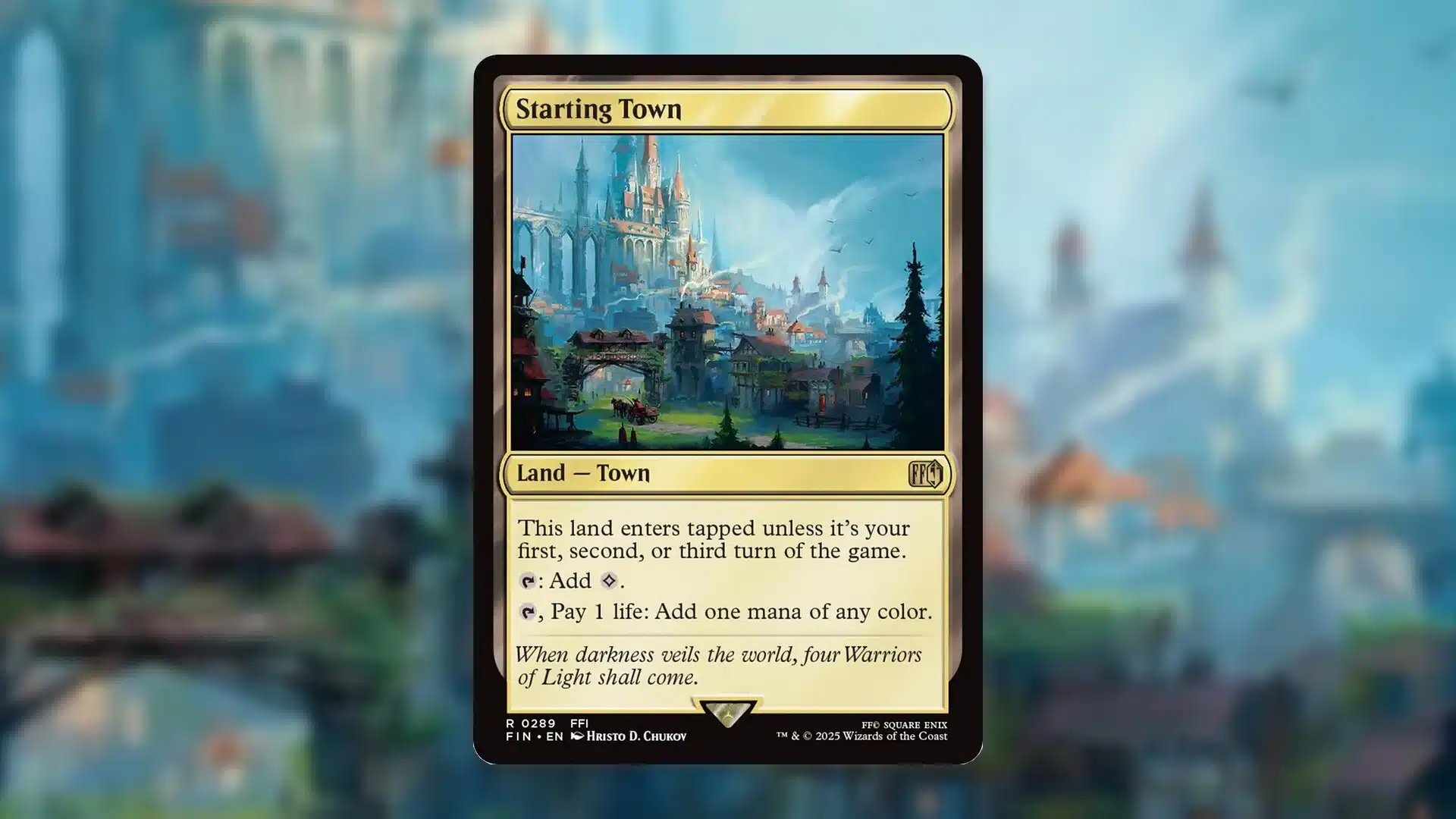During Final Fantasy spoiler season, one of the most hyped cards was undoubtedly Starting Town. Lands that fix for all five colors are always intriguing, especially for multicolor decks in Standard. These decks rarely have access to the most reliable mana base.
While Starting Town has lived up to the hype since its release, it wasn’t until recently that the card experienced a major price spike. Now, this land has become the second most expensive land in Standard, barely behind Cavern of Souls. Given just how much play it’s seeing across various formats, it was only a matter of time before Starting Town would surge in value.
Starting Town

This land shares a lot in common with City of Brass and Mana Confluence. After all, all three of these lands can produce any color of mana at the cost of one life. There’s one key difference that sets Starting Town apart however: the ability to produce colorless mana and avoid losing life.
This is a huge deal that cannot be overstated. As good as Mana Confluence can be as a mana fixer, the life loss adds up. If you ever have to play Mana Confluence as one of your first lands or even worse, draw multiples, you’re in a lot of trouble.
On the flip side, Starting Town is a great addition to assertive multicolor decks with intense color requirements. Take Esper self-bounce in Standard, for example. Starting Town does a great job casting Tragic Trajectory, Stormchaser’s Talent, and Nurturing Pixie by fixing your colors perfectly and entering untapped early.
Once you have your colors set up and start casting cards like Stock Up later on, you have the luxury of simply tapping Starting Town for colorless mana and keeping your life total high.
Esper self-bounce is far from the only Standard deck to make use of Starting Town. Plenty of top tier strategies, including Izzet Cauldron and Dimir Midrange, consistently play three or four copies of this land.
Beyond Standard play, Starting Town pops up in Simic Scapeshift combo in Pioneer. It’s also the most played Final Fantasy card in Commander according to EDHREC, so it’s no wonder the card is consistently in high demand.
The Spike

Near the start of July, the market price for near-mint, non-foil copies of Starting Town was under $10 according to TCGplayer. Even at this point, it was common for 80 or more near-mint, non-foil copies to sell daily. There were only a couple of days in July that this threshold wasn’t met, in fact.
As supply slowly dwindles over time, it makes sense that Starting Town’s price would increase modestly over the month. By July 29th, the market price had risen to just over $16.
Notably, demand saw an uptick at the end of the month. On July 30th, 109 items were sold, and on July 31st, 163 were purchased. This caused the supply to drop drastically, and with it, Starting Town’s price skyrocketed.
Starting Town currently holds a market value of $29.11. Today, multiple sales over $33 have already gone through. The lowest current listing for near-mint, non-foil copies sits at $32.
Notably, near-mint foils experienced a similar trend. Near mint, foil copies of Starting Town hovered around $18 for most of July. On July 31st, though, 47 near mint foils sold, which is significantly more than on any other day in the month.
Following this spike in demand, the market price for foils rose significantly. At the time of writing, the market price for foils is $32.72. Multiple separate sales over $48 have been completed today as well, suggesting that foils are worth more than the market price may lead you to believe.
Rotation Plays a Role
At first, it may seem a bit strange for Starting Town to suddenly see an uptick in demand just a few days ago. Once you factor in the fact that a handful of sets just rotated out of Standard with the release of Edge of Eternities, things get much clearer
Multiple tier one decks in the format lost important pieces of mana fixing. Izzet Cauldron, for example, lost Shivan Reef and didn’t gain any meaningful replacement in Edge of Eternities. Dimir midrange gained Watery Grave but lost Underground River and Darkslick Shores in the process.
As a result, these two-color decks have been forced to look elsewhere for dual lands. In both cases, Starting Town was the natural turning point. Neither of these decks played Starting Town prior to rotation, and now the land is a staple of these archetypes.
With so many decks adopting Starting Town after rotation, it’s a safe bet that the land will maintain a high level of demand for the foreseeable future. The land goes in so many decks that even as the metagame shifts, Starting Town’s role will always be important. While it’s impossible to know exactly how things will shake out, it wouldn’t be shocking if Starting Town maintains a hefty price tag for quite some time.
Stick with us here at mtgrocks.com: the best site for Magic: The Gathering coverage!
